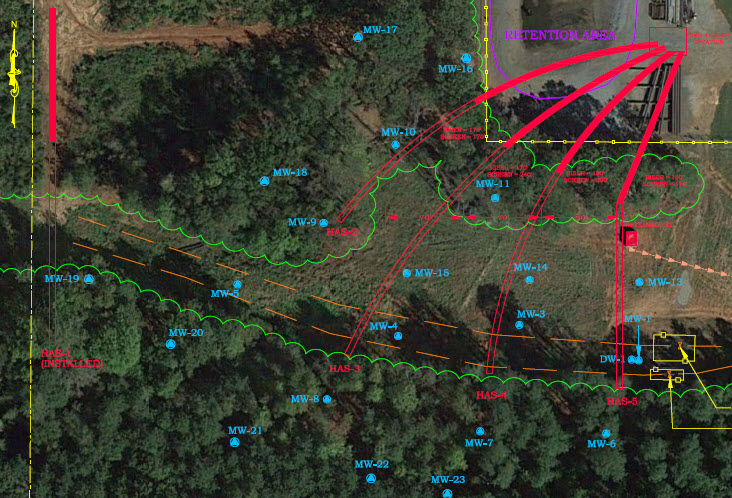With four months of use, horizontal biosparge wells are making an impact on a site where fuel leaked from a pipeline. During the first three months of operation, the results could be seen on the surface during rain events with the sign of bubbles in the puddles with an estimated radius of influence up to 50 feet perpendicular to the horizontal well.
While conducting maintenance activities, a gasoline leak occurred on a pipeline property associated with a facility. Approximately 25,000 gallons of fuel was released into the soil and groundwater. After emergency response efforts were conducted, and after the first phase of soil and groundwater delineation, a remedial plan was initiated that included the installation of 9 vertical product recovery wells, 16 groundwater monitoring wells (15 shallow, 1 deep), as well as soil excavation. As an interim corrective measure, one horizontal air sparge well was installed as a sparging-curtain to preclude additional migration of gasoline off the site.
The consultant developed their Corrective Action Plan (CAP) selecting a horizontal biosparge well option. Benefiting from prior site knowledge gained during the installation of the air sparge curtain well, Directional Technologies worked with the consultant to find the optimal design and layout for the full-scale implementation.

Layout featuring initial horizontal air sparge curtain (left)
and four additional biosparge wells for full scale treatment (right)
The following were the main factors in the consultant’s decision to include horizontal biosparge wells in their CAP:
- Large plume, migrating rapidly
- Site constraints, including off-site access and subsurface conditions of sand, gravel, and rock
- Owner has known and proven success with horizontal wells
- Difficult terrain to operate equipment
- Safety issue with work in and around an active pipeline
- Horizontal wells passed approximately 20 feet below pipeline avoiding surface disruptions
The 5 horizontal biosparge wells, ranging from 320 feet to 410 feet in length, were constructed using 3-inch HDPE materials. The horizontal well screens were installed at a depth of 30 feet below ground surface and operate between 0.1 to 0.3 CFM per foot. The soil conditions varied from clays to sand and then encountering rock. Due to site constraints and offsite access, all wells were installed using the blind well installation method, where no exiting or daylighting is required.
The wells have been operating for months, and a significant decrease in the dissolved and pockets of free product, which had been observed in many of the monitoring wells, has been observed. Continued operation is planned.